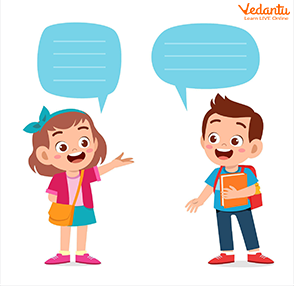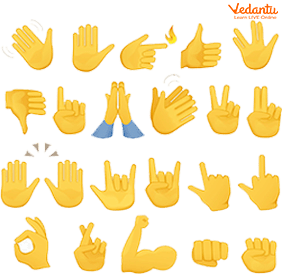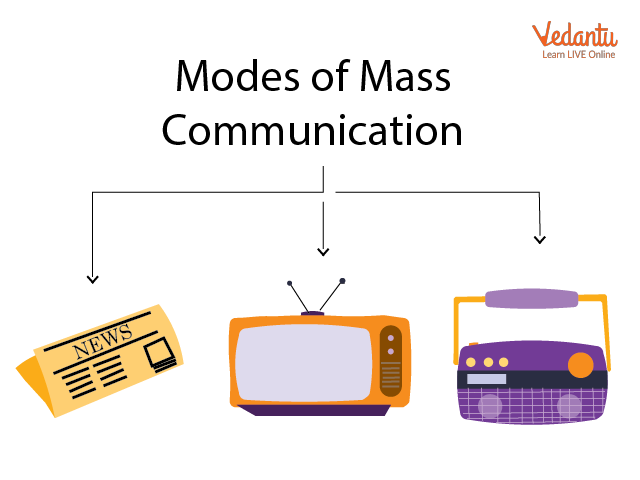




Introduction to Communication
Every day, we communicate with a large number of people. Consider what may happen if no one communicates. We shall be unable to communicate our thoughts, ideas, and emotions. As a result, communication is an integral component of our lives. People communicate thoughts, views, and information through communication. There are several methods to communicate. We can express ourselves in writing, vocally, or by gestures.
What is Communication?
Communication is defined as the act of delivering, receiving, and exchanging information and in other words, talking, writing, and listening or reading. Good communicators pay close attention, talk or write clearly, and respect opposing viewpoints.
Types of Communication
There are two types of communication or we can say two major forms of communication, one is verbal and the other is non-verbal communication. These are explained below.
Verbal Communication:
We utilise words to transfer our thoughts in verbal communication.
The two major types of verbal communication are written and oral (spoken) communication.
Handwritten letters, papers, typed documents, email, text conversations, books, and other forms of written communication are all examples of written communication.
We say words either face to face or over the phone in oral conversation. This comprises speech, lecture, and voice chat, among other things.

Verbal communication between two people
Non-Verbal Communication:
It does not necessitate the use of words. It is accomplished by the use of facial expressions, body motions, signs, drawings, graphic design, colour, photographs, and paintings, among other things.
Waving a hand, pointing a finger, smiling, and making faces are all examples of how we convey our feelings and emotions.

Signs of Non-verbal Communication
Means of Communication
Basically, there are three means of communication which are postal, telecommunication and mass communication.
Postal Communication: Though letter writing is not particularly common nowadays, it was once a very widespread mode of communication. Postcards, mail, and packages are physically delivered by the postal system.

Postal communication modes
Let's see how our letter gets to its intended recipient. We wrote a letter and include the address as well as the PIN number (Postal Index Number), which we then put into a nearby letterbox. Later, a postal employee clears the mailbox, sorts all of the letters by PIN number of destination, and delivers them.
Telecommunication: Telecommunication is the act of communicating across a long distance. Telegrams, cell phones, landlines, satellite phones, radio, and television are all examples of telecommunication.

Telecommunication modes
Telegram: A brief communication conveyed through telegraph and subsequently delivered to the addressee in written or printed form. Telegrams can also be sent by telephone.
Telephone: Alexander Graham Bell was the first to invent the telephone. It's the quickest way to communicate. We can make STD (Subscriber Trunk Dialling) calls to our family and relatives in other cities, as well as ISD (International Subscriber Dialling) calls to people in other countries.
Mobile Phone: We can make calls at any moment with a cell phone. It may be used to send and receive text messages, read emails, and browse the internet, among other things. These phones are compact and portable, allowing us to take them with us wherever we go.
Computer and Internet: Most of us nowadays use the internet to send e-mail (electronic mail) to our family and friends and to communicate with our loved ones who live in various countries.
Mass Communication: The transmission or exchange of information to a large number of individuals at the same time is referred to as mass communication. Newspapers, periodicals, radio, television, and cinema are all examples of mass communication.

Mass Communication
Solved Questions
What are the various modern means of communication?
Ans: Communication denotes everything that allows us to convey thoughts and ideas from one location to another. Telephone, radio and television, telex, fax, pagers, email, newspapers, and cinema are all modern modes of communication.
Mention the various types of communication skills.
Ans: Basically there are five types of communication skills and these are mentioned below as;
Verbal communication: When we communicate with others, we are engaging in verbal communication. It can be done face to face, over the phone, or by email.
Nonverbal communication: Facial expressions, posture, eye contact, hand motions, and touch are all examples of nonverbal communication.
Written communication: Whether it's a memo, email, a report, a Facebook post, a tweet, a contract, or anything else, the purpose of any written communication is to convey information in a clear and concise manner.
Listening: The act of listening is not frequently included in the various forms of communication. On the other hand, active listening is one of the most crucial sorts of communication because if we don't listen to the person across from us, we won't be able to successfully communicate with them.
Visual Communication: The use of visual components to express information or ideas is known as visual communication. Animated GIFs, pictures, movies, and image presentations are examples of visual communication.
What are the different levels of communication?
Ans: In general there are four distinct levels of communication i.e, intrapersonal, interpersonal, group, and cultural.
Interpersonal level of communication: Interpersonal communication is defined as the spoken or nonverbal exchange of information, ideas, and feelings between two or more individuals.
Intrapersonal level of communication: Communication with oneself is referred to as intrapersonal communication
Group level of communication: When three or more individuals interact to achieve a common purpose, this is referred to as group communication.
The cultural level of communication: The use of language and other communicative methods to carry out the activities and commitments of their particular communities in and through the use of symbolic resources is referred to as cultural communication.
Fun Facts
More than 9,000 years ago, the earliest written communication was in the form of signs and symbols!
Over 5,200 years ago, ancient Egyptians utilised hieroglyphic symbols. They kept track of their writing on stone or metal tablets, as well as papyrus, a plant-based paper.
Summary
We have discussed “what is communication”. Also discussed are the various forms of communication or medium of communication. Mainly, there are two types of communication, one is verbal communication and the other is non-verbal communication. Computers and emails come under the modern modes of communication.
Learning By Doing
Sending and receiving text messages from mobile comes under which mode of communication?
Talking with your friends comes under which level of communication?
FAQs on Means of Communication
1. What are the 'means of communication'?
The 'means of communication' are the different tools and methods we use to send and receive information, ideas, or feelings to and from others. It is the act of sharing something with another person, whether they are near or far away.
2. What are the main types of communication, with examples?
The main types of communication can be grouped into three categories based on how we use them in our daily lives:
- Postal Communication: This involves sending written messages through the mail. Examples include letters, postcards, and parcels.
- Telecommunication: This uses electronic devices to communicate instantly over long distances. Examples are telephones, mobile phones, and email.
- Mass Communication: This is used to send information to a large number of people at the same time. Examples include newspapers, television, radio, and the internet.
3. Which is the fastest means of communication available today?
The fastest means of communication today are electronic methods. Using a mobile phone to make a call or send a message, or sending an email via the internet, allows you to connect with someone on the other side of the world in just a few seconds.
4. How is personal communication different from mass communication?
The main difference lies in who receives the message. Personal communication is a two-way exchange between two people or a small group, like talking on the phone or writing a letter to a friend. Mass communication, on the other hand, is a one-way message sent from one source to thousands or millions of people at once, like a news broadcast on TV or an article in a newspaper.
5. How did people communicate over long distances before the invention of telephones and the internet?
Long ago, people used very different methods for long-distance communication. Some of these older or traditional means included sending trained pigeons with messages, using human messengers who would travel on foot or horseback, and sending letters through a very slow postal system that took weeks or months to deliver.
6. Why is it important to have so many different ways to communicate?
Having different means of communication is important because each one serves a different purpose. For an urgent message, a phone call is best. For sending a legal document, a registered post is better. For sharing news with everyone, television is effective. This variety helps us choose the most suitable method based on cost, speed, and the number of people we want to reach.
7. How have modern tools like smartphones changed the way we share information?
Smartphones have completely changed communication by combining many tools into one device. A smartphone is not just for calls; it allows for video chats (seeing the person you're talking to), instant messaging with photos and videos, accessing the internet for learning, and using social media to connect with friends. It has made communication more interactive and visual than ever before.





















